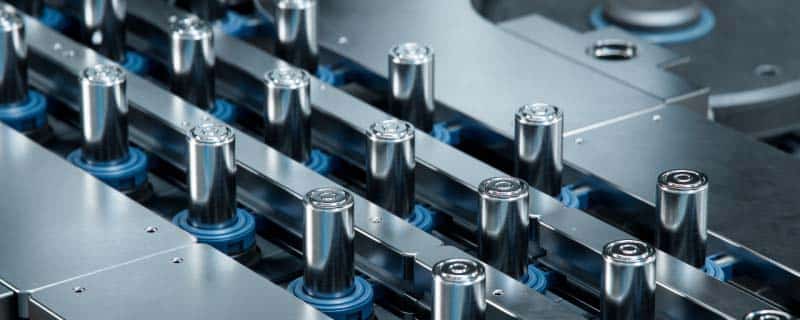Understanding the Risks
Particle contamination within EV batteries can lead to a range of safety hazards, from short circuits to thermal runaway –– where the entire battery pack could ignite within seconds. These risks are exacerbated by the presence of conductive particles, which can penetrate separator layers and cause battery ignition or even explosions.
Extinguishing fires in electric vehicles (EVs), especially those involving lithium-ion batteries, presents unique challenges. These batteries can catch fire after a crash or mechanical failure and are known to reignite even after initial flames are extinguished. This is due to the thermal runaway process where one cell overheating can cause adjacent cells to also overheat and fail.
Fire crews typically face significant difficulties with EV battery fires due to their intense heat and potential to reignite. Traditional firefighting methods might not be effective, and extensive amounts of water can be required. For instance, reports indicate that in some cases, fire departments have used over 8,000 gallons of water to manage these fires and have even resorted to innovative methods like submerging part of the vehicle in water to prevent reignition.
Beyond safety concerns, particle contamination can severely impact battery performance. Voltage drops, internal resistance is increased, and reduced capacity are just some of the consequences. Moreover, manufacturing inefficiencies arise occasionally, leading to costly downtime and scrap, ultimately affecting yield and sales.
Today’s Challenges

Detecting particles within the intricate confines of EV battery cells presents a formidable challenge. Traditional inspection methods, such as industrial microscopes, are ill-suited for the demands of mass production as their design is optimised for detailed examination of individual objects rather than the rapid pace of today’s assembly lines. Because of this, the need for scalable next-generation particle detection solutions has become increasingly pressing.
Manufacturers are exploring novel approaches, such as automated inspection systems and advanced imaging techniques, to enhance particle detection capabilities, all while streamlining their production processes. By addressing today’s challenge of particle detection head-on, manufacturers can uphold the highest standards of quality and safety for tomorrow’s EV battery production, driving the industry towards both a sustainable, and scalable, future.
Today’s Solution
Addressing particle contamination necessitates stringent contamination control measures. Maintaining cleanroom environments and implementing advanced particle detection systems such as the ApexZ or the continuous monitoring of the ApexRBp are crucial steps toward mitigating these hazards. That said, it’s essential that we grasp the distinction between conductive and non-conductive particles –– and how advanced detection systems effectively identify both. Employing light scattering technology, particle counters are tailored to the demands of automotive battery manufacturing, where particles of concern typically range around 20 micrometers (µm) and larger. The capability of Lighthouse’s ApexZ and ApexRBp models to detect both conductive and non-conductive particles is crucial, considering their significant impact on battery performance. In fact, Lighthouse Worldwide Solutions is the first to manufacture a particle counter dedicated to the size range for EV battery powder materials and focus on the detection of particles in the environment that could be potentially dangerous during the EV battery manufacturing processes.
Conductive particles pose a grave risk as they can create conduits for electrical current within the battery, potentially leading to short circuits or decreased efficiency. On the other hand, while non-conductive particles may not directly interfere with electrical pathways, they can still impede vital processes within the battery, resulting in physical damage and gradual degradation over time.
Additionally, testing during both battery cell manufacture and module assembly with handheld counters like the HH5016 can help identify and rectify contamination issues early on.
Trending and Baseline Establishment in Battery Manufacturing
Additionally, setting a contamination baseline for production is just as significant. Drawing from the stringent standards upheld in the cleanest semiconductor environments, this baseline can serve as a vital reference point. Attaining zero defects and sustaining contamination levels in line with this benchmark are paramount for guaranteeing top-notch production quality in both manufacturing and recycling/repurposing.
The Road to Tomorrow

As the EV industry matures, so too must its approach to recycling end-of-life batteries. Proper recycling not only recovers valuable materials but also minimizes environmental impact –– and particle counting is emerging as a critical aspect of this fledging industry. This is just one of a number of pain points manufacturers and recyclers face when ensuring that repurposed batteries meet safety, performance, and environmental standards for both home and grid use.
And now, with Federal programs potentially introducing 37 million additional EVs onto roads between 2023 and 2032, the urgency for recycling end-of-life EV batteries has dramatically intensified. Not only is it a matter of compliance, but it’s also crucial from environmental and health perspectives. Improper disposal of EV batteries could lead to fires or contamination of land and water with hazardous substances.
Failing to recycle end-of-life EV batteries also represents a significant economic loss, as they contain valuable materials like cobalt and nickel, which can be reclaimed. By recycling and/or repurposing EV batteries as they reach the end of their lifespan, we not only mitigate environmental and health risks but also harness the economic potential of a cyclical supply chain for future use.
Conclusion
Particle contamination presents a formidable challenge in EV battery manufacturing, with implications for safety, performance, and efficiency. By prioritising contamination control measures and investing in advanced detection technologies, manufacturers can navigate these challenges effectively. Moreover, as the EV industry transitions towards recycling, robust particle counting procedures will be essential for ensuring the safety, performance, and environmental sustainability of repurposed battery systems.
In the journey towards a greener future, addressing particle contamination is a crucial step in ensuring the reliability and safety of electric vehicles and their batteries. Partnering with Lighthouse Worldwide Solutions provides your company with a dedicated EV battery particle counter specifically designed for this application and a company that understand your needs for clean air monitoring of your facility.
If you’d like to learn more about Lighthouse’s efforts and products to support the EV industry, visit our Knowledge Center.

